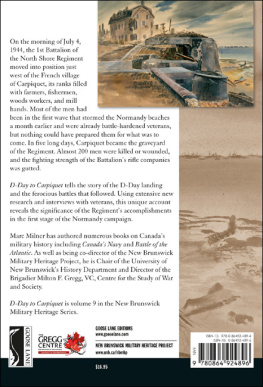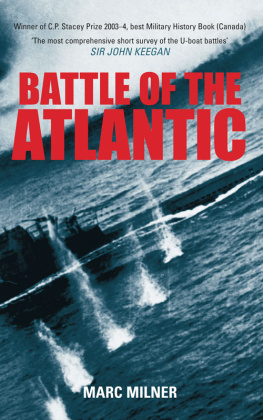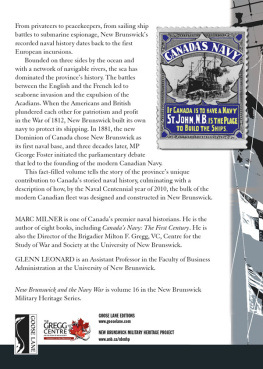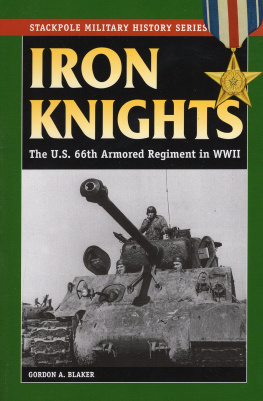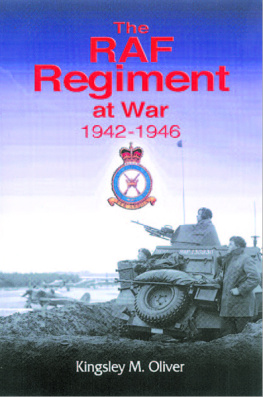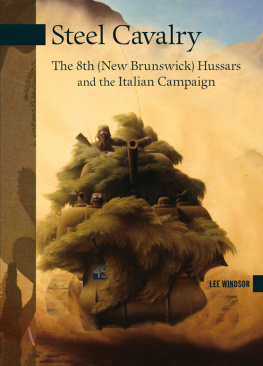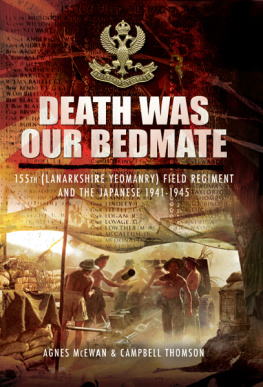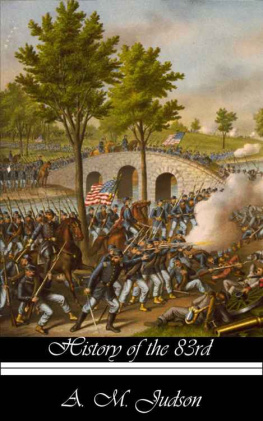D-Day to Carpiquet
The North Shore Regiment and the Liberation of Europe
The New Brunswick Military Heritage Series, Volume 9
D-Day to Carpiquet
THE NORTH SHORE REGIMENT AND THE LIBERATION OF EUROPE
Marc Milner
Copyright 2007 by Marc Milner.
All rights reserved. No part of this work may be reproduced or used in any form or by any means, electronic or mechanical, including photocopying, recording, or any retrieval system, without the prior written permission of the publisher or a licence from the Canadian Copyright Licensing Agency (Access Copyright). To contact Access Copyright, visit www.accesscopyright.ca or call 1-800-893-5777.
Edited by Brent Wilson.
Front cover: Battle for Carpiquet Airport (detail) by O.N. Fisher, CWM 197 10261-6183.
Back cover: Smashed German Beach Anti-Tank Gun, Normandy 4 July 1944 by O.N. Fisher,
CWM 197 1026-6375.
Cover and interior page design by Julie Scriver.
Printed in Canada.
10 9 8 7 6 5 4 3 2 1
Library and Archives Canada Cataloguing in Publication
Milner, Marc
D-Day to Carpiquet: the North Shore Regiment and the liberation of Europe / Marc Milner.
(New Brunswick military heritage series; 9) Co-published by New Brunswick Military History Project.
Includes bibliographical references and index.
ISBN 978-0-86492-489-6
1. Canada. Canadian Army. Battalion, New Brunswick Regiment (North Shore), 1st History.
2. World War, 1939-1945 Regimental histories Canada.
3. World War, 1939-1945 Campaigns France Normandy.
4. World War, 1939-1945 Campaigns France Carpiquet.
5. Carpiquet (France) History, Military.
I. New Brunswick Military Heritage Project II. Title. III. Series.
D756.5.N6M495 2007 940.542142 C2007-900462-8
Goose Lane Editions acknowledges the financial support of the Canada Council for the Arts, the Government of Canada through the Book Publishing Industry Development Program (BPIDP), and the New Brunswick Department of Wellness, Culture and Sport for its publishing activities.
Goose Lane Editions
Suite 330, 500 Beaverbrook Court
Federicton, New Brunswick
CANADA E3B 5X4
www.gooselane.com
New Brunswick Military Heritage Project
The Brigadier Milton F. Gregg, VC,
Centre for the Study of War and Society
University of New Brunswick
PO Box 4400
Fredericton, New Brunswick
Canada E3B 5A3
www.unb.ca/nbmhp
Iconic footage of the D-Day landings: the North Shore Regiment comes ashore on A Companys beach at la Rive Plage, just before 0800 June 6, 1944. Canadian Forces Film Unit
Contents
Members of A Company pose near Anguerny, June 8, 1944. Front row: Syd Cable, Frank Cripps, and Vince Nolan. Back row: Red Cripps, Bill Clancy, and Marven Harding. LAC
Introduction
In the early hours of July 4, 1944, the 1st Battalion The North Shore (New Brunswick) Regiment (NSR) deployed into a grain field two kilometres west of the French village of Carpiquet. Most of the men had stormed the Normandy beaches a month earlier, and they had spent the intervening weeks holding the line. By July, they were battle-hardened veterans. But nothing in their experience had prepared them for Carpiquet. As the NSR waited for its attack to commence, many had premonitions of death. One group of six men from the Acadian Peninsula had talked through the night, wondering aloud who among them would survive the coming battle. Three did not. Only Omer Larocque from Lamque Island remained on his feet the next day and he had shrapnel in his leg. Other survivors told similar stories.
When the barrage started at 0500 hours, the battalion, with le Rgiment de la Chaudire to their right, moved forward into a maelstrom that poured down on them from three sides. Only the dust and smoke from the relentless explosions offered any cover during that tortuous crossing of the open grain field. The two-kilometre plunge into the German line by the NSR and other battalions of the 8th Canadian Infantry Brigade was like poking a stick into a wasps nest. Throughout the fourth, the bombardment of Carpiquet village was remorseless: the Germans claimed there would be no one left to stop their counterattacks. They were wrong. On the first night in Carpiquet, the NSR and its supporting forces stopped five attacks launched by the elite of the German army. Unable to dislodge the Canadians, and with their own casualties mounting, the Germans brought down a rain of fire on the village that did not abate until the nearby city of Caen was liberated on July 10.
The NSR endured Carpiquet with stoicism and courage, and at great cost. I saw reinforcements come up to us in the evening, Padre Myles Hickey wrote after the war, and I would bury them the following morning. By the time the battle was over, 370 Canadians had been killed or wounded, 270 of them from the NSR. These losses gutted the fighting strength of the North Shores rifle companies, and their replacements drawn from across Canada permanently altered the composition of the battalion. Small wonder that the hell called Carpiquet was remembered by North Shore veterans as the graveyard of the regiment.
Few people know the story of the North Shore Regiment and its remarkable accomplishments in the liberation of Europe during the Second World War. Drawn from a rural part of a very rural province, the NSR had no stellar lineage or great social cachet. Its ranks were filled with farmers, fishermen, woodsworkers, and mill hands, drawn largely from tough Scots, Irish, and Acadian settlers along the Baie des Chaleurs, the Acadian Peninsula, and the Miramichi River. Its noncommissioned officers (NCOs) the sergeants and corporals were typically shop foremen or gang bosses, ordinary guys with little formal education. The NSR officers were drawn largely from the social elites of society, men with money and status, although by 1944 some were from humble backgrounds who had climbed the ranks of the pre-war militia. With few exceptions the bulk of the battalion came from isolated family farms, tiny fishing villages, Native reserves, and small urban centres like Dalhousie and Newcastle. They shared many things in common, including a rough pride in eking a living from the land and sea in the tough climate of northern New Brunswick. Most exhibited a self-reliance borne of necessity, were comfortable in the woods with a rifle, understood fieldcraft instinctively, were inured to hardship and privation, and expected to move from job to job without much reward or recognition. Fishing, hunting, baseball, and hockey were their passions, and most were Roman Catholics. All that said, they had their differences. About twenty percent were Acadians, many of whom spoke no English when they joined, and the divide between the Miramichi and the communities along the Chaleurs and between urban and rural was often pronounced. At least twice during their long years of training in England, NSR commanding officers took advantage of changes in battalion organization to shuffle their troops around, breaking up cliques and welding the unit together.
By the time the NSR landed on the beaches of Normandy, it was reckoned to be one of the top two battalions in the Canadian Army. Thats probably why it got the nod to land in the initial assault, the only regiment from a rural area in the leading wave on the Canadian beaches. It also had, arguably, the toughest task of any Canadian battalion landing on D-Day. Certainly it was the only one tasked with both breaching the beach defences and then tackling a series of heavily fortified positions laid out in depth behind the seafront. In the event, the NSR failed to achieve all its D-Day objectives, a failure mitigated by the fact that it took a whole British brigade a further ten days to accomplish what one NSR company was supposed to achieve on D-Day.
Next page
